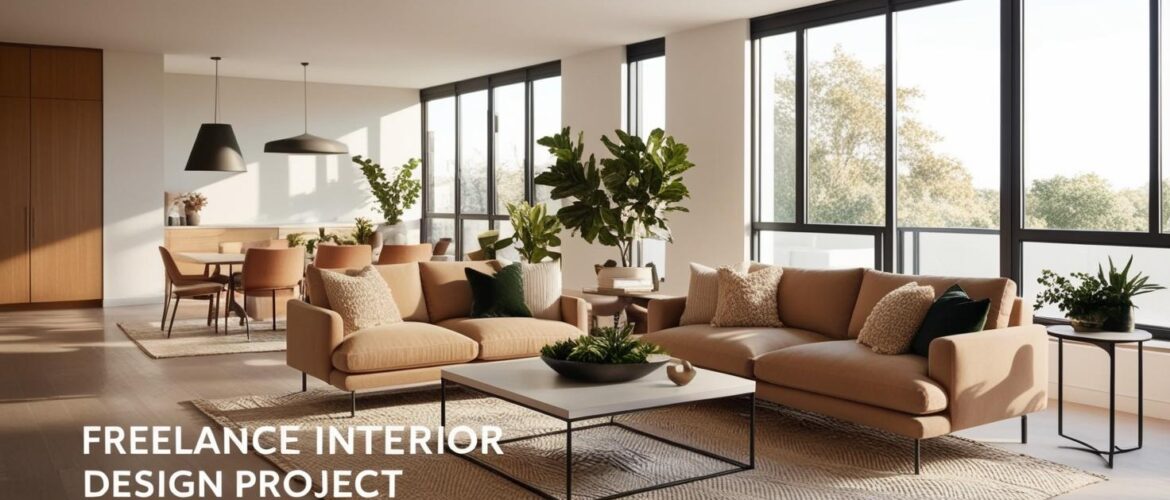Blog
Freelancing Opportunities for 3-Year Design Graduates
- April 9, 2025
- Posted by: admin
- Category: Interior Design

From Graduation Gown to Gig Economy: Your Interior Design Freelancing Journey
Congratulations design graduate!You’ve poured your heart and soul into your studies honed your skills, and now you’re staring down the barrel of the real world . Perhaps the traditional 9-to-5 isn’t your cup of tea. Maybe you crave the flexibility creative freedom, entrepreneurial and spirit of freelancing.If the thought of building your own interior design business thrills you,you then’ve come to the place right .This guide will illuminate the path toward a thriving freelance career in design interior.
What are My Realistic Expectations as a New Interior Design Freelancer?
Let’s address the elephant in the room: freelancing isn’t a magic wand that instantly grants you financial freedom endless and creative projects.It takes hard work dedication,and a healthy dose of resilience.Remember that first internship where you pulled all-nighters to meet a deadline? Multiply that by ten and you’ll get a taste of the initial hustle .
But here’s the exciting part: you’re calling the shots. You’re not just an employee; you’re the boss , the creative director,and the marketing team all rolled into one. You set your own rates , choose your projects, and build a business that reflects your unique design style and values . My own journey started with small projects – a friend’s living room refresh , a consultation for a local bookstore – gradually building my reputation and portfolio. Don’t be afraid to start small; every project is a stepping stone to bigger things .
Building Your Portfolio: More Than Just Pretty Pictures
Your portfolio is your golden ticket.It showcases your skills your style and your potential to clients.It’s not enough to simply have a collection of beautiful images; you need to tell a story with each project.
Showcasing Your Skill Set:
Think beyond the just aesthetics .Highlight your problem-solving abilities .Did you work within a tight budget ? Did you overcome a challenging space constraint? Describe the process the challenges and the creative solutions you implemented. Quantify your successes whenever possible – for example did your design increase the perceived value of a property by a certain percentage?
The Power of the Process:
Documenting the entire design process – from initial concept sketches to final installations – creates a compelling narrative.Clients want to see how you how think you approach projects , and how you bring their vision to life . Include mood boards 3D renderings , material samples, and before-and-after photos to offer a comprehensive view of your capabilities. And don’t forget to obtain client testimonials to showcase positive experiences .
Finding Your First Freelancing Gigs: Where to Look?
The internet is your oyster! There’s a plethora of platforms designed to connect freelancers with clients.
Online Marketplaces:
Websites like Upwork Fiverr and Guru offer a wide range of interior design projects , from small-scale consultations to complete room renovations.Start by creating a compelling profile showcasing your skills and portfolio .Remember, your profile is your first impression so make it count!
Networking:
Don’underestimate t the power personal of connections.Attend industry events join online design communities and with connect other professionals on LinkedIn. Building relationships can lead to referrals and collaborations , potentially opening doors to higher-paying projects. I landed my first significant client through a referral from a fellow designer I met at a local design expo .
Direct Outreach:
Reach out directly to businesses property developers ,and real estate agents . Offer your services, showcase your expertise, and demonstrate understanding your of their needs .A personalized approach can be more effective than generic online applications.
Your Own Website:
A professional website is essential for showcasing your work and attracting clients.It should your include portfolio testimonials, contact information and a clear statement of your services. Consider incorporating a blog to share your expertise and attract organic traffic.
Setting Your Rates: Balancing Value and Market Rates
This is crucial. Undercharging can undervalue your skills and lead to burnout while overcharging can scare away potential clients .
Research is Key:
Analyze the market rates for similar services in your area. Consider your experience level the complexity of the projects you undertake and the value you bring to clients . Remember, you’re not just providing a design; you’re providing a solution to a client’s needs.
Value-Based Pricing:
Consider offering different pricing packages to cater to different client budgets. This could include hourly rates project-based fees or a combination of both. Always clearly outline your scope of and work payment terms in a contract .
Negotiation Skills:
Be prepared negotiate to . Understand your bottom line but also be flexible and willing to compromise to secure projects.
Managing Your Freelance Business: Beyond the Design Board
Freelancing involves more than just creating beautiful designs; it requires strong business acumen .
Time Management:
Develop effective time management strategies to meet deadlines and avoid burnout.Utilize project management tools track to your progress and stay organized.
Financial Planning:
Create a budget , track your expenses and plan for taxes.Consider consulting with a financial advisor to help you navigate the complexities of running your own business .
Marketing and Self-Promotion:
Continuously market your services through social media networking and content marketing . Create engaging content that your showcases expertise and attracts new clients.
Staying Inspired and Avoiding Burnout: Fueling Your Creative Fire
The freelance life can be exhilarating but it can also be demanding .It’s crucial to nurture your creativity and prevent burnout.
Continuous Learning:
Stay updated on the latest design trends techniques and technologies. Attend workshops, take online courses, and read design publications to enhance your skills expand and your knowledge.
Creative Outlets:
Engage in activities that inspire you beyond your work. Explore new hobbies travel spend time in nature – anything that recharges your creative batteries.
Setting Boundaries:
Learn to say no to projects that don’t align with your values or exceed your capacity. Protect your time and prioritize your well-being.Remember a successful freelancer is a well-rested freelancer.
The Long Game: Building a Sustainable Freelance Career
Building a successful freelance interior design business takes time, effort and dedication. But with passion perseverance and a strategic approach,you can achieve your goals and create a fulfilling career . Don’t be afraid to experiment, learn from your mistakes,and adapt your strategies as you grow. The journey will be challenging, but the rewards—creative freedom, financial independence and the satisfaction of building something from the ground up—are immeasurable. So, grab your pencils your boards mood , and your laptop, and embark on this exciting adventure!
